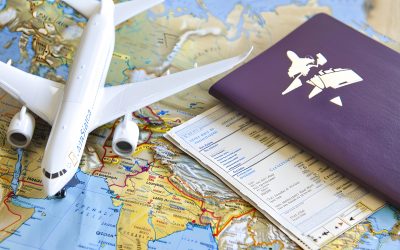MICE tourism (Meetings, Incentives, Conferences, and Exhibitions) has emerged as a key segment in the global tourism industry. This type of tourism, focused on attracting business meetings, conferences, incentive events, and trade shows, has become a strategic tool for destinations seeking to diversify their tourism offerings and attract high-value visitors. Beyond beaches and monuments, MICE tourism allows destinations to position themselves as centers of business and technology while boosting the local economy.
The Impact of MICE Tourism on the Local Economy
Meetings and events tourism benefits not only hotels and convention centers but also extends its impact to the entire local community. When a large event takes place in a city, it generates additional demand in sectors such as transportation, catering, logistics, and local commerce. MICE visitors, who are typically professionals and company representatives, have a higher daily spending average than leisure tourists. Additionally, this type of event promotes seasonality, as it does not depend on weather conditions or traditional vacation seasons, allowing for a steady flow of tourists throughout the year.
Cities that successfully attract large events have also seen boosts in their infrastructure and modernization of services. Investment in transportation, technology, and new facilities not only enhances the experience for event attendees but also leaves a legacy that residents can enjoy long-term. This dual economic and social impact is one of the main attractions of MICE tourism.
How to Attract Large Events to Your Destination
For a destination to attract large events, it is essential to have suitable and modern infrastructure. Well-equipped convention centers, a varied and quality hotel offering, and an efficient transportation network are basic requirements to compete in the MICE market. However, infrastructure alone is not enough; effective promotion of the destination in the global market is also necessary.
Marketing strategies aimed at this sector require a specialized approach. Participating in international MICE tourism fairs and maintaining close relationships with event organizing agencies are essential steps to put a destination on the radar of major organizers. Furthermore, destinations that offer tax incentives, event organization facilities, and logistical support tend to stand out over those that do not.
A key aspect of this type of promotion is differentiation. Event organizers are looking for destinations that offer more than just a space for conferences; they want unique experiences. The ability to integrate cultural, culinary, or leisure activities can make all the difference when attracting large-scale events. Cities that have successfully exploited their cultural and historical particularities, such as Lisbon or Prague, have managed to attract numerous international events, providing attendees with the chance to enjoy not only a workspace but also an enriching experience.
The Value of Sustainability in MICE Tourism
One of the most important trends in current MICE tourism is the demand for sustainable events. Organizers and attendees are increasingly concerned with reducing the environmental footprint of their conferences and meetings, and destinations that adapt to these new demands will have a competitive advantage in the future. Incorporating sustainable practices, such as using renewable energy in convention centers, reducing single-use plastics, or creating recycling programs for events, can be a key point in attracting major meetings.
Additionally, the rise of hybrid events (which combine in-person and virtual elements) has opened up new opportunities for destinations that have the necessary technological infrastructure to support this type of gathering. Virtual meetings reduce the need for travel and allow destinations to accommodate a larger number of participants without the logistical challenges associated with traditional events. Adapting to this new model not only requires having the right technology but also offering interactive experiences that keep attendees engaged, both in-person and online.
Examples of Destinations That Have Successfully Leveraged MICE Tourism
Some destinations have stood out in recent years for their ability to attract large events and enhance their international image. Cities such as Barcelona, Singapore, and Dubai have heavily invested in their MICE infrastructure and international promotion, managing to position themselves as leaders in the sector.
Barcelona, for example, is the host of the Mobile World Congress, one of the world’s most important events in the mobile technology sector. This event generates millions of euros in revenue each year and has also positioned the city as a global tech hub. Singapore, on the other hand, has focused on becoming a leader in organizing sustainable events, with modern facilities and eco-friendly practices that attract an increasing number of international meetings.
These examples demonstrate how a destination can leverage meetings and events tourism not only to attract visitors but also to improve its infrastructure and position itself internationally.

Challenges and Opportunities for MICE Tourism in the Future
As MICE tourism continues to evolve, destinations will face new challenges. Competition among cities is fierce, and event organizers are becoming increasingly demanding. Expectations regarding technology, sustainability, and service quality are rising, and destinations that do not adapt risk being left behind.
However, these trends also open up new opportunities. Destinations that invest in technological infrastructure and adopt sustainable practices will not only attract more events but also benefit from an improved image on the international stage. The key will be in the ability of destinations to innovate, differentiate themselves, and offer experiences that combine the best of business with the best of leisure.
The Future of MICE Tourism
MICE tourism presents an unparalleled opportunity for destinations seeking to diversify their tourism offerings and enhance their local economy. With adequate planning, smart investments, and an effective marketing strategy, any destination can position itself as a leading hub for meetings and events.
The future of MICE tourism will depend on destinations’ ability to adapt to new demands from organizers and participants and to offer more than just a workspace: a complete experience. In an increasingly connected and environmentally conscious world, those destinations that can leverage these trends will be the ones that lead the sector in the years to come.






